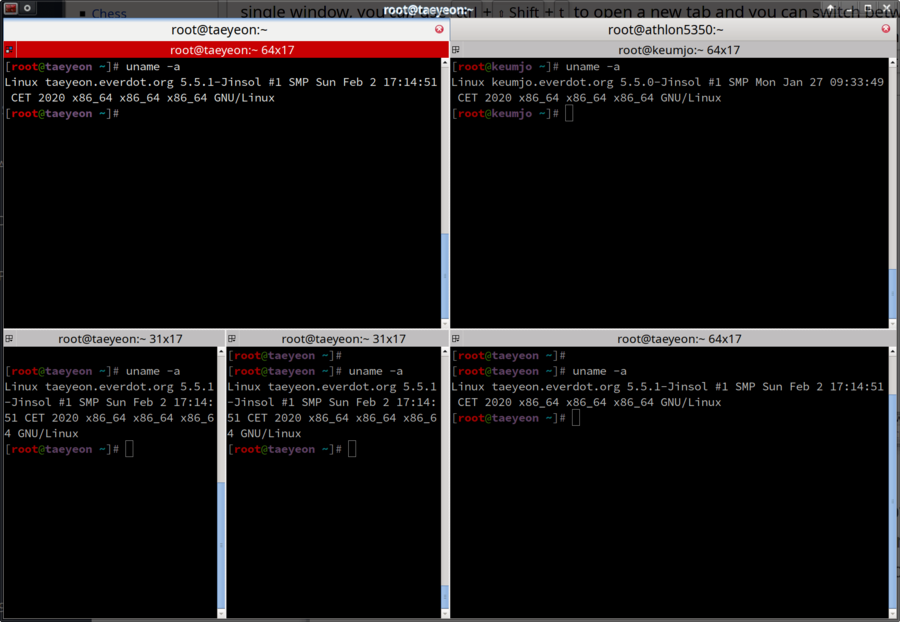Terminator
Terminator is a terminal emulator based on an old version of GNOME terminal which lets you easily meaningfully arrange arranging multiple virtual terminals in a grid within window. It has a really handy feature which stands out as unique and practical: It allows you to type in one terminal and send the keystrokes in that terminal to either all the open terminal windows or just the terminal windows within a tab. The rest of its feature-set is on par with other modern terminal emulators.
Features And Usability[edit]

Part of Terminators "About" dialog box.
The stock Terminator icon features four small terminal windows within a single window. Its icon is very appropriate: Terminator is all about having multiple terminals open in a grid layout within a single window. You are not forced to work with several terminals within a single window, you can use ctrl+⇧ Shift+t to open a new tab and you can switch between tabs with ctrl+pgup and ctrl+pgdown - this functionality is the same as it is in any other terminal. Terminator has two additional options most terminal emulators do not: ctrl+⇧ Shift+o splits the window horizontally, ctrl+⇧ Shift+e splits it vertically. You can also split windows using a menu which pops up if you press ≣ Menu or right-click in a terminal window.

Terminator lets you split the window into smaller windows with ctrl+⇧ Shift+o (splits horizontally) and ctrl+⇧ Shift+e (splits vertically).
Terminator has a very handy broadcast to all feature which sends keystrokes to either all terminal windows (including other tabs) which can be activated with alt+a. alt+o turns broadcast to all off, pressing alt+a again when it is activated does not.
You can also send all keystrokes to a group. super+t makes the split terminal windows within a tab a group. alt+g activates broadcast group which sends keystrokes to all the terminals within a group. This is useful if you have multiple tabs with split windows and want to send keystrokes to all the terminals in just one tab.
Terminator has all the regular features you find in other modern terminal emulators. Transparency is supported, tabs are supported, profiles with different fonts and colors are supported and so on. Window layouts can be saved and attached to stored profiles.
Keybindings are configurable in its . The default are mostly identical to the default keybindings in other terminals. The window is otherwise filled with all the options who should be there. The tab view can be placed on the top or bottom or be hidden. Focus can be set to "follows mouse" or "click to focus" (default). It supports custom URL handlers, etc. There is an option for making the window borderless but that one doesn't work, it is probably desktop or theme dependent.
Verdict and Conclusion[edit]
Terminator is very handy if you regularly ssh into numerous boxes and do the very same thing on all of them. It lets you split one window in two or four or more and run the same commands on all of them. It can be a time-saver if you have a cluster of Raspberry Pi's or a cluster of actually powerful serves and you need to do a configuration change or system update on all of them.
Terminator is also fine as a regular general-purpose terminal. It has everything other terminals have (with the exception of KDEs konsole which do have more features) so you won't miss anything if you decide to use it as your only terminal.
Installation[edit]
Terminator is a rather old program which has not been updated since 2017 (v1.91). All the major distributions have the latest version available as a package called terminator (sudo dnf -y install terminator or sudo apt install terminator).
Links[edit]
Terminator doesn't really have a homepage. It does have a blog at gnometerminator.blogspot.com and a Launchpad development page at launchpad.net/terminator. The terminator manual page has not been updates since 2008.

Enable comment auto-refresher